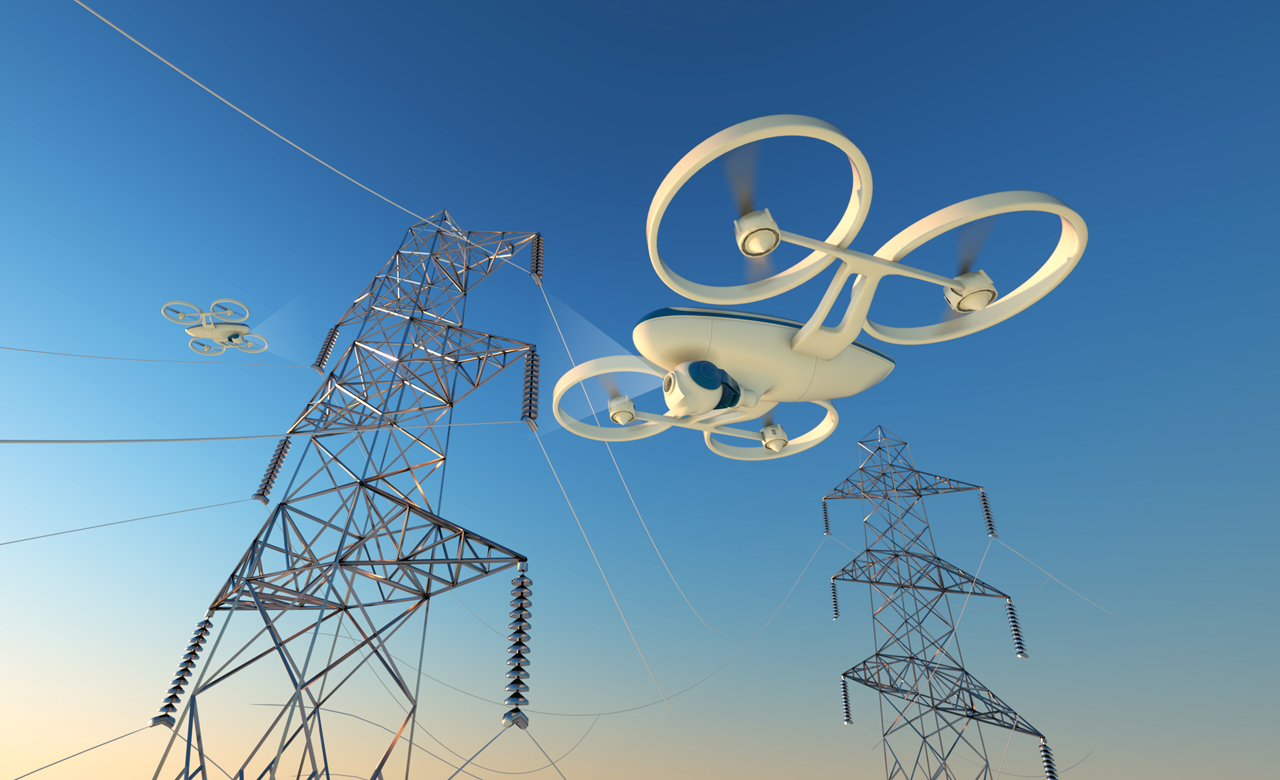
The technology world is buzzing with trends such as IoT, virtual & augmented reality and their applications in tools such as wearable devices and drones. One can witness the astonishing pace of progress that these tech-tools have made over the past few years and their application to the real world.
There is also a growing transition of these technology based innovations into the utility industry. Tech-evangelists are optimistic, on how smart grids, advanced metering infrastructures, virtual power plants, smart homes, intelligent transportation and smart cities will enable the utilities of tomorrow.
According to a recent report by Gartner, “A confluence of socioeconomic drivers and technology innovation is forcing utilities to transform into digital enterprises”. Utility CIOs should evaluate these trends to successfully embark on a digital transformation journey while meeting traditional expectations from regulators and customers.
Let’s have a look at how these emerging technologies are all set to take off in the utility industry.
Internet of Things (IoT)
IoT is a giant network of connected devices, electronics and sensors such as smart homes, smart phones, smart cars and smart cities which enables data exchange in real time. Experts estimate that IoT will consist of about 30 billion objects with a global market value of approximate $7.1 trillion by 2020.
According to research firm IDC, in 2016, IoT spending in utilities ranked third ($69 billion) followed by manufacturing and transportation industry. The geospatial enablement of these connected devices play a pivotal role in the utility marketplace.
For example, geo-enabled applications (such as web mapping, mobile GIS app, sensors and operations dashboard) can help utilities access, query, and display a web map of real-time outage status and economic loss information associated with outages in the county scale.
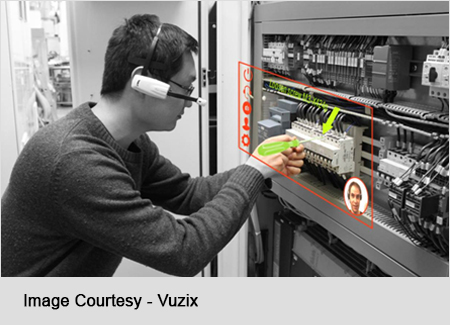 Wearable Devices, Virtual and Augmented Reality
Wearable Devices, Virtual and Augmented Reality
Wearable devices, virtual reality (VR) and augmented reality (AR) are now becoming the next computing platform, followed by personal computers and smartphones. According to CCS Insight’s forecast for wearable devices – which includes smartwatches, fitness trackers, augmented and virtual reality headsets and wearable cameras – indicates that the market is set to grow from 84 million units in 2015 to 245 million units in 2019.
Wearable devices like smart glasses can both collect and deliver data in the field. Other devices include smart watches and other smart wrist and armbands, smart helmets, and sensors embedded in clothing designed to detect such things as radiation and/or chemicals. Most promising, however, is the smart glasses + AR (augmented reality) combo, along with the data analytics aided by this new wave of mobile technology.
These technologies fundamentally shift the way information is relayed to the user, offering immediate access to critical data and information. They offer various use cases in utility domain such as assets inspection and maintenance, work instructions, training, workflow management, operations and safety etc. For instance, via smart glasses a worker can work in remote locations, where they need to collaborate on detailed designs, troubleshoot operational issues or receive training on complex processes.
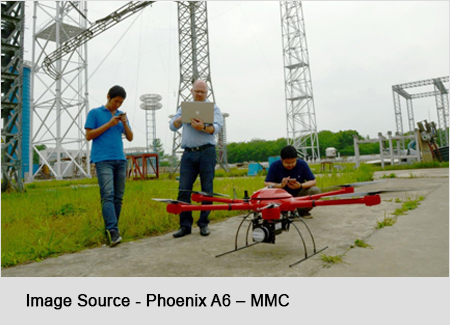 Drones
Drones
Drones or remotely piloted aerial systems (RPAS), are now becoming a mainstream tool in utility industry, and are expected to have an increased use for grid monitoring. According to Research and Markets report, global demand for drones in energy industry will reach a cumulative market value of $4.47 Bn for 2017-2025 including sales of UAV hardware, software, and service spending. Reportlinker predicts that the global UAV drones market may grow at a CAGR between 19% and 20% from 2017 to 2023, with Asia-Pacific region to become the fastest growing market.
Drones can track the health of the transmission and distribution systems, cutting down expenditure on the use of aerial surveys or manual visits; engineers could use augmented reality to quickly target a problem with a piece of equipment; or a virtual reality model could enable someone to remotely predict catastrophic failures to distribution equipment. In 2016, a utility inspection drone finished a 5 km round-trip flight for the first commercial power line inspection in China.
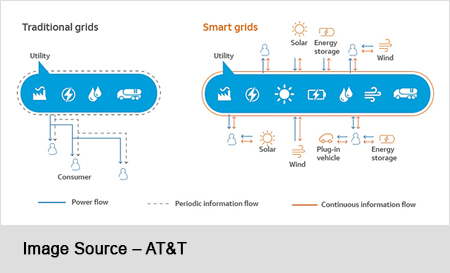 Smart Grids
Smart Grids
Smart grids comprise a variety of operational and energy measures including smart meters, smart appliances, renewable and energy efficient resources. Electrical India (India’s oldest magazine on power and electrical products industry) defines ‘Smart Grid’ as ‘a system of systems’, or simply put, a platform that enables functioning of different technologies and systems. From energy efficiency perspective, the ‘smart’ way of energy use implies energy resource optimization (e.g., own generation or distribution grid), as well as optimization of time of use (e.g., avoiding peak hours’ usage).
According to Research and Markets, the smart grid market is expected to grow from USD 20.83 Billion in 2017 to USD 50.65 Billion by 2022, at a CAGR of 19.4%, driven by increased demand for integration of renewable energy sources across the globe, and government policies and mandates for sustainable energy.
Smart grids deal with important aspects such as electronic power conditioning, production control, electricity distribution and reduction of carbon emissions.
It is believed that smart grids transform the way power is delivered, consumed, and accounted for. This can also facilitate network planning and construction, operation management, market trading and service in utility industry.
Advanced Metering Infrastructure
Advanced metering infrastructure (AMI) is an integrated system of smart meters, communications networks, meter data acquisition, and meter data management systems that enable two-way communication between utility service providers and customers. AMI is considered as a cornerstone of the smart grid by potentially providing a communication backbone for low-latency data aimed at improving distribution asset utilization failure detection, and facilitating consumer inclusion in utility markets.
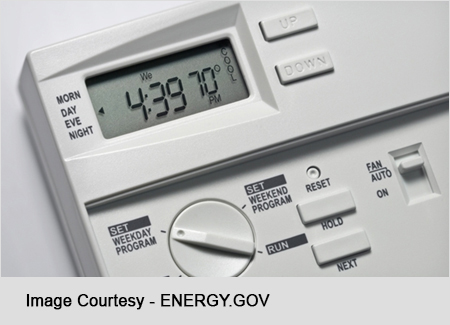 AMI offers many benefits to utility companies at operational, security and financial front such as faster return of investment (ROI) by reducing equipment and maintenance costs, enabling faster restoration of electric service during outages, and streamlining the billing process. From consumer perspective, AMI gives consumers more control and flexibility over their energy bills, encouraging small-scale home-based renewable energy installations, accommodating faster service restoration, early meter failure detection and improving the accuracy of billing.
AMI offers many benefits to utility companies at operational, security and financial front such as faster return of investment (ROI) by reducing equipment and maintenance costs, enabling faster restoration of electric service during outages, and streamlining the billing process. From consumer perspective, AMI gives consumers more control and flexibility over their energy bills, encouraging small-scale home-based renewable energy installations, accommodating faster service restoration, early meter failure detection and improving the accuracy of billing.
Office of electricity delivery & energy reliability (U.S. Department of energy) under Smart Grid R&D Program suggests that AMI helps in engaging customers in meeting demand response efforts through time-based rates programs that can help customers save money and manage their energy consumption. AMI expands the range of time-based rate programs that can be offered to consumers. For example, smart customer systems such as home-area-networks or in-home displays can make it easier for consumers to change their behavior and reduce peak period consumption from information on their power consumption and costs.
These emerging technologies show an encouraging application into the utility sector. However, they will require all the resourcefulness and intellect to convert them into promising opportunities for future.
These will definitely reshape the utility landscape to build a need based market and related services portfolio for the utility industry.